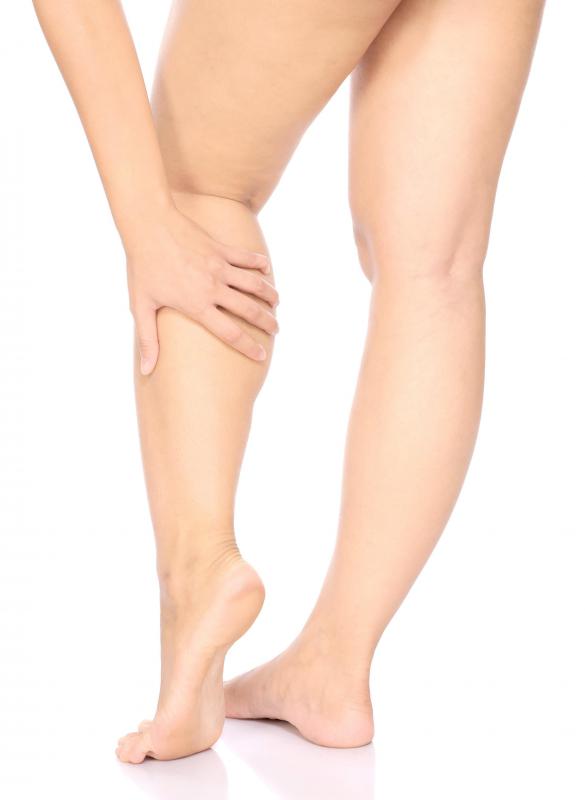At WiseGEEK, we're committed to delivering accurate, trustworthy information. Our expert-authored content is rigorously fact-checked and sourced from credible authorities. Discover how we uphold the highest standards in providing you with reliable knowledge.
What are the Symptoms of a Pulled Calf Muscle?
The symptoms of a pulled calf muscle can vary with different levels of severity. Slight calf strains may cause a small amount of pain in the calf area when walking. More severe strains can actually make it impossible to walk or cause very severe pain. Sometimes a pulled calf muscle can also lead to bruising around the area of the strain, and this will be worse with more severe injuries. Some degree of swelling is also relatively normal.
A pulled calf muscle is generally a very common sports injury, which can happen during any kind of athletic activity where people need to stand up and move. In most cases, people suffer a pulled calf muscle when they move their ankles in a drastic way. For example, if a person leaps off something high and lands too forcefully, the calf muscle might take too much of the impact. A pulled calf muscle can also easily happen while someone is running.

From a clinical perspective, a pulled calf muscle occurs when muscle fibers are torn. Usually, the muscle fiber tears will be extremely small, and people may not even realize they have an injury. In fact, it is relatively normal to have microscopic muscle tears after any activity, and the body's attempts to repair these tears is a natural part of the muscle-strengthening process. When muscle tears become larger, they can be somewhat debilitating. The most severe muscle injuries can involve a rip that breaks a muscle in half—this kind of extreme pulled muscle may not heal without surgical assistance.

Most doctors recommend that patients rest their calves as the first course of treatment after a pulled calf muscle. The general rule is to avoid pain. If someone feels pain while doing something, that can be the body's way of warning the person away from the activity. If people ignore pain signals and keep doing activities anyway, they can run a real risk of injuring themselves more severely.
Using pain as a guide to healing muscles means that the patient might stay in bed most of the time for a few days. Eventually, the person may start limping and will need to be careful to avoid putting too much weight on the injured calf. Over time, the person will usually start to trust the muscle more and ease back into activities until he can perform them normally. Less severe calf injuries will naturally require less caution. During the healing process, patients also often use over-the-counter pain medication and ice to lessen their symptoms.
AS FEATURED ON:
AS FEATURED ON:












Discuss this Article
Post your comments